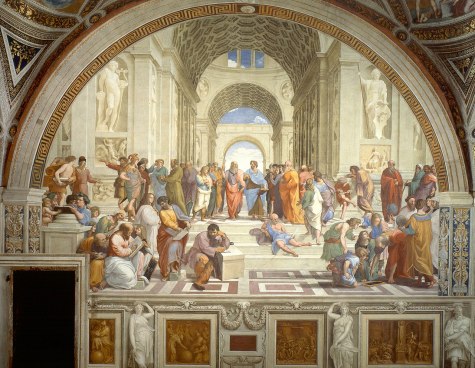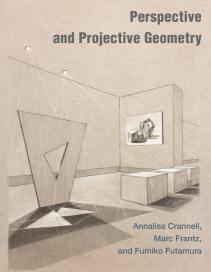The development of perspective in the early Italian Renaissance opened the doors of perception just a little wider. Perspective techniques enabled artists to create strikingly realistic images. Among the most notable were Piero della Francesca and Leon Battista Alberti, who invented the method of perspective drawing.

For centuries, artists have painted scenes on a sheet of glass. Art students sometimes begin by sticking masking-tape on a large window. They soon discover that some lines that are parallel in the physical scene converge when marked on the window. By such exercises, they develop the capacity to visualize on a plane scenes in space.
A New Book
 Artists were ahead of mathematicians, who only later codified the techniques in projective geometry. But the relationship was mutually beneficial, with each group learning from and teaching the other. A new book on the interface between mathematics and art, Perspective and Projective Geometry by Annalisa Crannell, Marc Frantz and Fumiko Futamura, has been published recently by Princeton University Press. They make the bold claim that the book “will change the way that you look at the world, and we mean that literally”.
Artists were ahead of mathematicians, who only later codified the techniques in projective geometry. But the relationship was mutually beneficial, with each group learning from and teaching the other. A new book on the interface between mathematics and art, Perspective and Projective Geometry by Annalisa Crannell, Marc Frantz and Fumiko Futamura, has been published recently by Princeton University Press. They make the bold claim that the book “will change the way that you look at the world, and we mean that literally”.
The challenge undertaken by the authors was to elucidate techniques used in graphical art by revealing the geometric principles underlying them. Several theorems of Euclidean geometry are relevant to perspective geometry. Students of perspective benefit from knowledge of the theorems of Ceva, Menelaus and Desargues.
Casey’s Angle
A quantity called the cross-ratio is of key importance in both perspective drawing and projective geometry. It is invariant (unchanging) under perspective transformation. Another quantity of value in perspective drawing is Casey’s Angle. The invariance of this angle was first proved by the Irish geometer John Casey, born in Co. Limerick 200 years ago this month. [Last week’s post about John Casey, on this blog, includes links to applets illustrating Casey’s Angle]
The extension of Euclidean space that includes points and lines at infinity, is important for perspective. The extended space includes the vanishing points of parallel lines. The final chapter of the book, at a more advanced level, is on arcana like the topology of the perspective plane and the shape of space in the large. While not of central relevance for practicing artists, this may provide “a new perspective on perspective”.
The authors have undertaken a formidable task: to teach mathematics (geometry) to artists and (graphic) art to geometers. They have been only partially successful. They are not the first to struggle with such a task. We recall Euler’s book, Tentamen novae theorae musicae, completed when he was 23 years old. This work was described as “too mathematical for musicians and too musical for mathematicians”.
A complete review of the book will appear in the Bulletin of the Irish Mathematical Society [reference to follow].
See also the next post, on Albrecht Dürer .
Sources
Annalisa Crannell, Marc Frantz and Fumiko Futamura, 2019: Perspective and Projective Geometry, Princeton University Press. 280pp. ISBN: 978-0-6911-9656-5.
